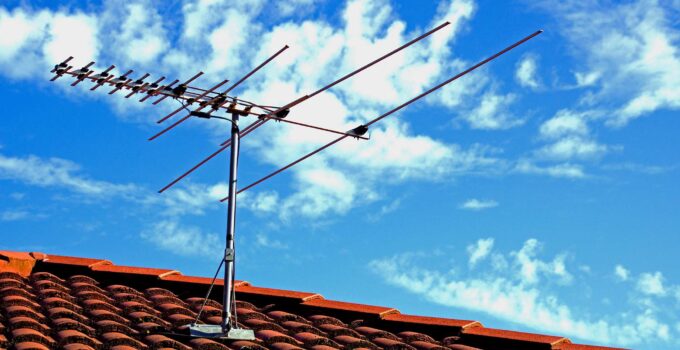Over the years, humankind has developed a seemingly unbreakable bond with their TVs, and even though means of receiving TV signals might be evolving, a vast majority of active television aficionados still rely on skillfully positioned aerials to provide them with their favorite material. Even though the whole process of adequately positioning your TV aerial with the right polarization might be challenging, we assure you the following lines will provide you with sufficient pieces of information on how to correctly align it so not solely yourself, but also your friends and family can enjoy the crystally clear picture broadcasting on the screen.
Polarization Types
Source: vintage-radio.net
The point of a TV aerial is to receive a signal and it is of utter importance to emphasize that the reception depends both on the transmitter and the receiver. Namely, the aforementioned need to match in order for the whole procedure to be successfully completed.
In a nutshell, there are 3 basic types of polarization, at least when TV aerials are concerned. Therefore, it is reasonable that particular aerials are composed in a way to receive peculiar signals more easily.
Firstly, we should mention linear polarization and highlight there are 3 types of linear aerials. The name suggests that all the communication should happen linearly and that one should pay attention to potential physical obstacles in order not to compromise the connectivity. This is the most common type of TV aerials and depending on their composition, we distinguish aerials with horizontal, vertical, and slant polarization.
The second, less represented variant is the circular polarization, and we distinguish left- and right-hand circular polarization types. Namely, the transmitted signal moves in a circular fashion and is more convenient for satellite communication than it is for ground-to-ground settings.
Finally, the least popular type is the mixed polarization, and it represents the combination of linear and circular variables. you should also be aware that any type of aerial has the ability and will receive any type of signal it crosses paths with, regardless of its specific design. Reasonably, the quality of the reception will depend on the adequacy.
Reach Out for Professional Assistance
Without question, the easiest way to make sure your TV aerial is correctly aligned is to reach for a helping hand of professional aerial service. Surely, it might cost you more than the case would be if you have tried to do it on your own, but we assure you it would be worth your money, especially when you consider the benefits of watching everything comfortably from a safe distance.
Also, make sure you contact local services first since it is highly likely they are more familiar with the local signal peculiarities. According to tayloraerials.co.uk, if you live in Liverpool, it would be ideal to book in your TV aerial installation locally, since the chances are major that locals know a thing or two more than the competition from the neighborhood. Likewise, you should expect to score a better bargain if you hire someone from your surroundings.
Copy from Your Neighbours
Source: nytimes.com
If you do not know how to position your TV aerial, but you reject the possibility of paying someone capable of doing it, we advise you to take a look at your neighbors’ aerial settings and copy them until you catch the signal you are satisfied with.
We should highlight that imitating aerial settings you notice in your surroundings does not mean you will get to the ideal reception immediately, but it can appoint you in the right direction if you are lucky.
Additionally, you should use this approach combined with pieces of data you can find online. Namely, particular platforms provide their users with adequate solutions when locating the most adequate receiver in their surroundings is in question. All you have to do is type in your address and some basic information in order to receive the peculiarities necessary for you to align the aerial in the appropriate direction.
Even though this step might seem more than enough to seal the deal, you should take it easy until you are satisfied with the results, since the data you would end up with depends on your location, not on other important features that could influence signal patency. Either way, you can use the data you receive and adjust further corrections according to them until you get what you want.
Make Sure You Have the Real Deal
As we have mentioned earlier, there are ways to pick up some traces of signal even though the receiver you use might be inappropriate. Namely, what you should take care of is that you have exactly the aerial that matches your needs. That implies the aerial corresponds to the exact signal type you are trying to put your hands on and that the signal of your interest reaches the place where you intend on placing the aerial.
Once you are positive that the device you have is genuine, all you should do is follow the instructions and position the aerial to its position where it faces the signal source without any visible obstacles potentially compromising the reception.
Use the Tool You Find Most Suitable
Source: bobvila.com
There are numerous tools one can use to adequately align their TV aerials. Depending on how you intend on fixing the issue, you might opt for a more or less expensive option and try to apply what we have talked about so far. So, in case you want to handle the situation in a professional fashion, we advise you to loosen the bag and invest in one of the pro gadgets in charge of measuring dB, MER, and BER.
In a nutshell, decibels should inform you about the strength of the signal, while modulation error ratio and bit error ratio should guide you further into where to point the aerial.
On the other hand, if the aforementioned seemingly technical terms give you chills, we suggest you reach for your mobile device and find the appropriate app that would guide you through the aligning process step by step.
The aforementioned makes us wonder why aligning a TV aerial has not become easier over the years. To be honest, it is, and all you have to do is either dedicate your time and thought to fixing the issue on your own, with slight hints you can discover in this article, or to call the pros that will gladly do everything for you for a small compensation. One way or another, there are means of clarifying your TV picture with ease so after getting to know how to handle particular things, there should be nothing stopping you from enjoying your TV time without restrictions.




